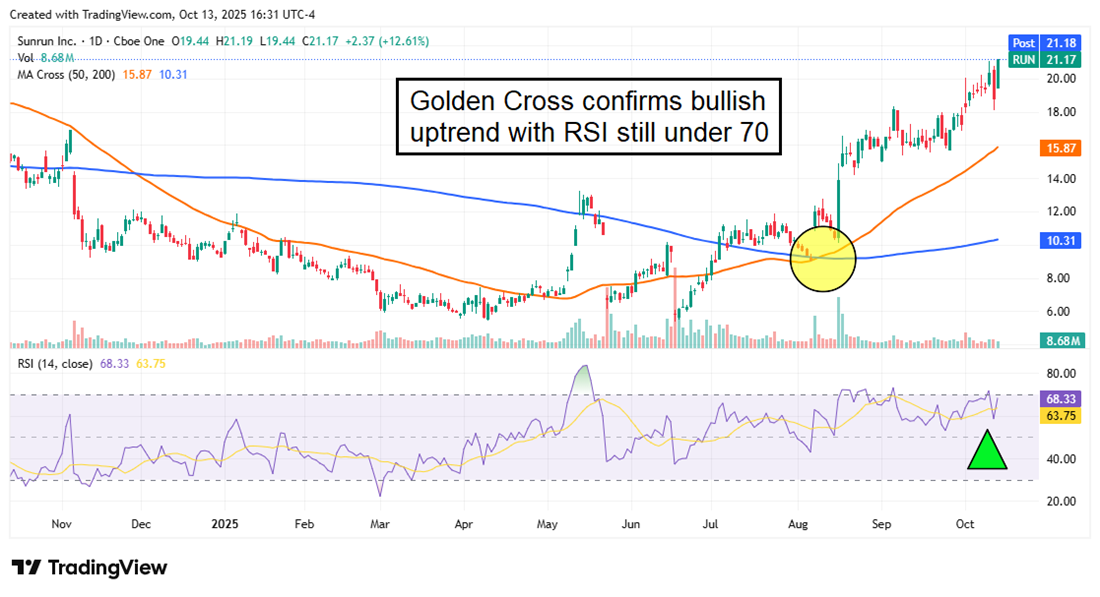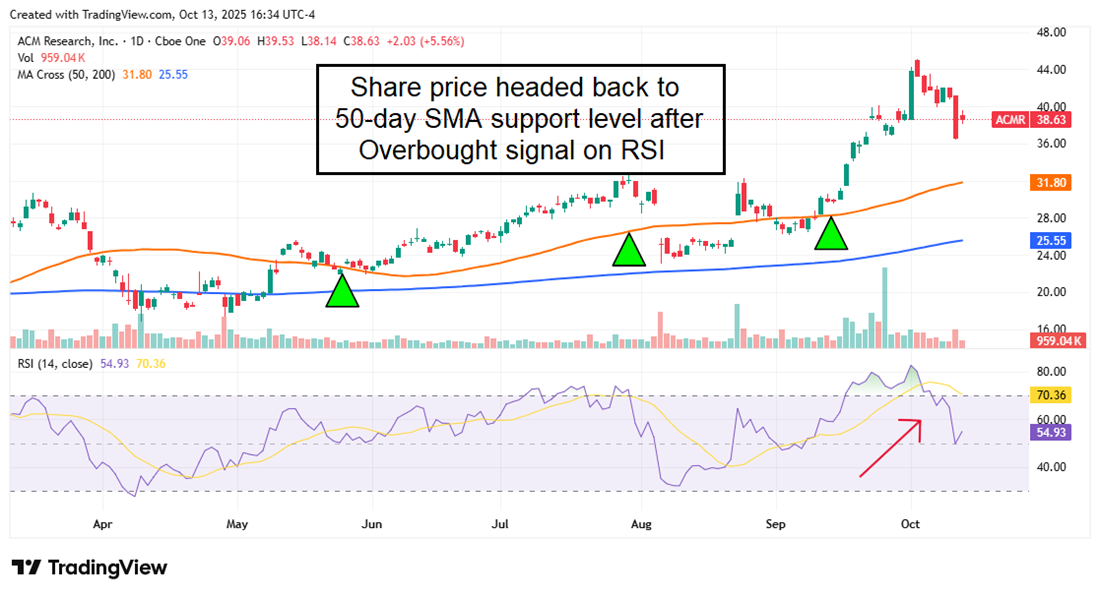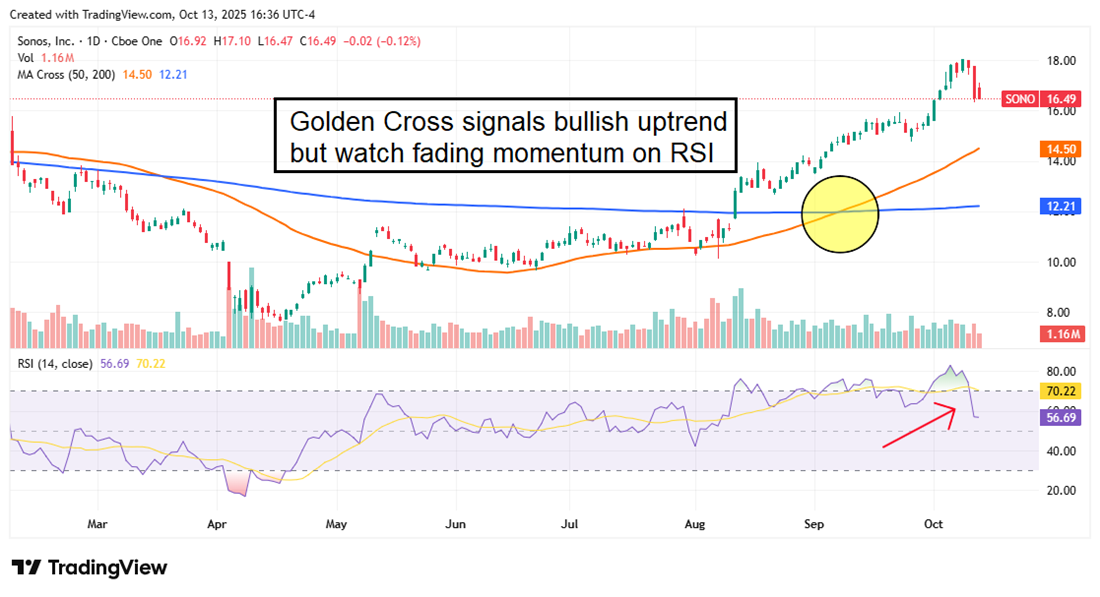|
|
|

|
|||||

|
|

When mega-cap stocks are hitting new all-time highs every other week, it's easy for smaller corners of the market to get lost in the excitement. Let’s face it: If it's not artificial intelligence or crypto, it's not getting more than a 30-second soundbite on the financial news cycle right now. But gains count whether they come from big stocks or small stocks, and when speculative fervor intensifies, small-cap stocks can quickly catch up to their larger counterparts.
Today, we’ll examine three small-cap stocks hitting a key technical level: their 52-week highs.
Is it time to take profits on these winners, or are their rallies just getting started?
Small caps don’t always behave like large-cap companies; their volatility often scares off risk-adverse investors. You must pay attention to both fundamental and technical signals to trade small caps successfully, which can be tedious for investors who prefer not to be bothered with day-to-day market gyrations.
When a stock makes a new 52-week high, it's typically seen as a bullish momentum signal since new highs often beget more new highs.
Of course, if all you needed to do was buy stocks breaking out to 52-week highs to earn outsized returns, every investor with a pulse would be using that as a blanket strategy. Instead, the 52-week high should be a beacon directing you to take a closer look. The tools you use in your research usually depend on your time frame.
If you’re a long-term investor, fundamental metrics and future catalysts are crucial factors to keep in mind. And if you have a shorter timeline (like day or swing trading), you’ll want to incorporate technical trading tools like moving averages and momentum oscillators to find signals.
The following section will focus on these technical signals as we examine three small-cap breakout candidates that recently surpassed their 52-week high-water mark.
What counts as a small-cap stock? Even microcap penny stocks have market caps over $100 million nowadays, so we’re sticking with companies under $5 billion in market cap for this scenario. However, these three companies operate in different stock sectors, and various market influences have triggered their breakouts.
Sometimes, bad news can be good if the market anticipates terrible news. That sentence probably makes your head hurt, but it makes more sense in context. When the One Big Beautiful Bill Act (OBBBA) was on the table in Congress, many expected federal solar tax credits and subsidies to be eradicated.
Solar stocks spent most of the first half of 2025 in a drawdown, anticipating these changes.
However, when the final bill was signed into law, investors learned that federal solar tax advantages hadn’t been fired into the sun. While the bill still called for phaseouts of many solar initiatives, the news was merely bad instead of catastrophic.
And in the months since its passage, solar stocks have been revived, especially small caps like Sunrun Inc. (NASDAQ: RUN).

Sunrun has received several analyst upgrades in the last two months, and the chart also shows several promising signs. The price has broken out above the 50-day and 200-day simple moving averages (SMAs), with a Golden Cross confirming the upward momentum.
Additionally, the Relative Strength Index (RSI) still hasn’t triggered an Overbought signal, hinting that this rally still has several innings remaining.
It wouldn’t be a complete stock discussion without including at least one name from the tech sector. ACM Research Inc. (NASDAQ: ACMR) sells critical semiconductor sanitizing equipment, and its tiny $2 billion market cap stock is up more than 150% year-to-date (YTD).
No need to waste time explaining the catalyst here; everything and anything connected to AI is going straight to the moon. But how much longer can ACMR’s ride continue?
The ACMR daily chart paints a less promising picture than RUN above. The stock has firmly established support at the 50-day SMA, and the long-term trend appears to be intact. But the price has soared well above the support level it spent most of 2025 hugging, and an Overbought signal on the RSI triggered a sell-off.

While betting against AI right now is bad for the blood pressure, ACMR appears destined to decline back to its 50-day SMA before the rally can resume.
Sonos Inc. (NASDAQ: SONO) manufactures the wireless audio equipment that likely powers your NFL Sundays.
This sector is currently facing significant challenges due to high tariffs. In its Q3 2025 earnings report released on August 6, the company missed earnings projections despite a slight revenue beat.
Executives also noted that U.S. tariffs on Vietnamese and Malaysian imports will force Sonos to raise prices later this year.
Despite these fundamental headwinds, the stock has been up more than 50% in the last three months thanks to a wave of bullish momentum. Investors face a tricky situation here; the company itself is facing significant margin pressure from tariffs, but a Golden Cross signals strong upward momentum.

One crucial technical indicator moving forward will be the RSI, which recently tripped the Overbought alarm. If the RSI continues to fade, momentum in SONO shares could fade as well. Should the stock follow the RSI downward, the 50-day SMA becomes a key support area to monitor.
Before you make your next trade, you'll want to hear this.
MarketBeat keeps track of Wall Street's top-rated and best performing research analysts and the stocks they recommend to their clients on a daily basis.
Our team has identified the five stocks that top analysts are quietly whispering to their clients to buy now before the broader market catches on... and none of the big name stocks were on the list.
They believe these five stocks are the five best companies for investors to buy now...
The article "3 Small Caps Hitting 52-Week Highs: Take Profits or Let Ride?" first appeared on MarketBeat.
| Dec-17 | |
| Dec-17 | |
| Dec-12 | |
| Dec-12 | |
| Dec-12 | |
| Dec-12 | |
| Dec-11 | |
| Dec-10 | |
| Dec-09 | |
| Dec-09 | |
| Dec-07 | |
| Dec-05 | |
| Dec-05 | |
| Dec-03 | |
| Dec-03 |
Join thousands of traders who make more informed decisions with our premium features. Real-time quotes, advanced visualizations, backtesting, and much more.
Learn more about FINVIZ*Elite